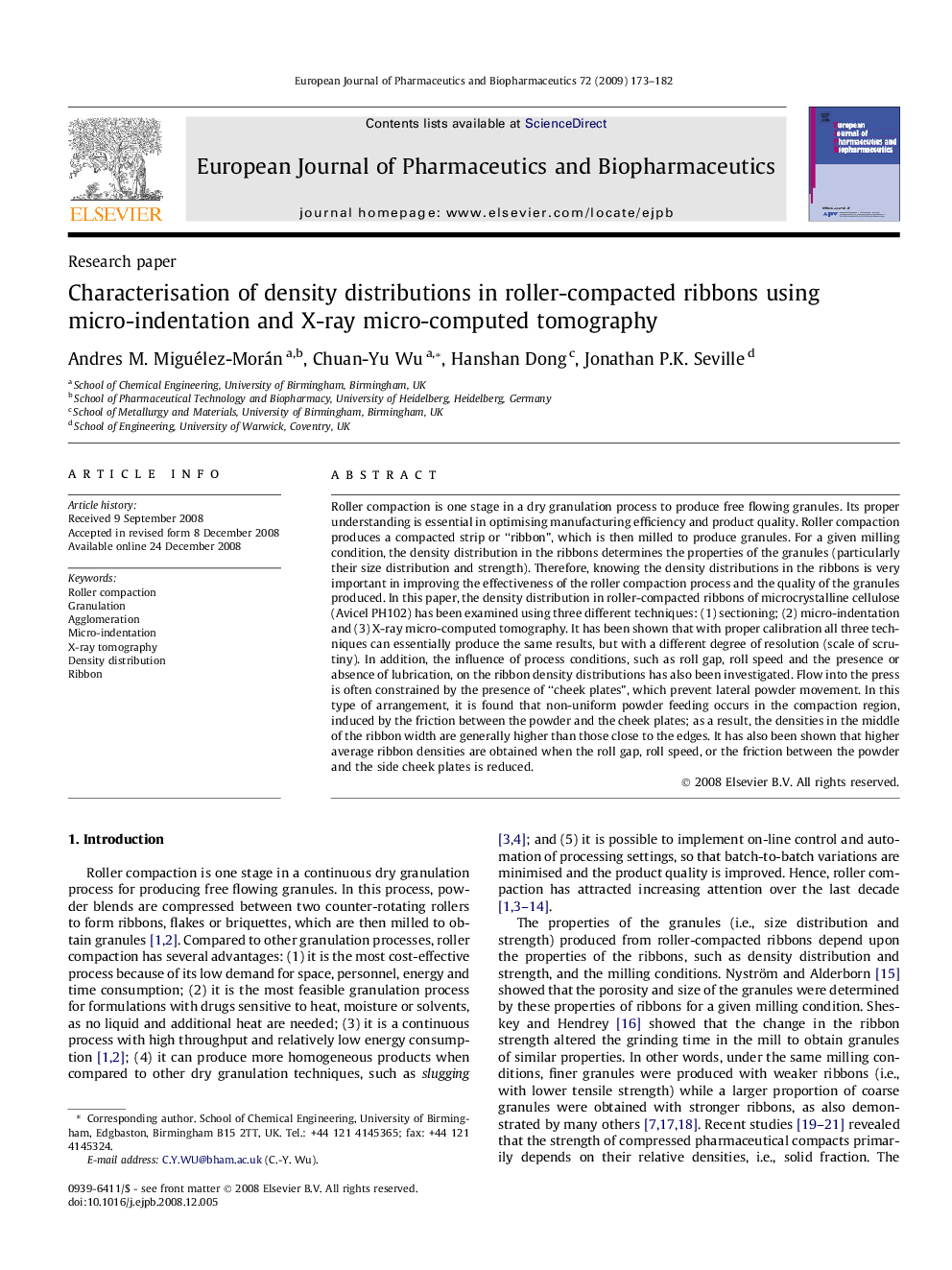| کد مقاله | کد نشریه | سال انتشار | مقاله انگلیسی | نسخه تمام متن |
|---|---|---|---|---|
| 2084357 | 1545388 | 2009 | 10 صفحه PDF | دانلود رایگان |

Roller compaction is one stage in a dry granulation process to produce free flowing granules. Its proper understanding is essential in optimising manufacturing efficiency and product quality. Roller compaction produces a compacted strip or “ribbon”, which is then milled to produce granules. For a given milling condition, the density distribution in the ribbons determines the properties of the granules (particularly their size distribution and strength). Therefore, knowing the density distributions in the ribbons is very important in improving the effectiveness of the roller compaction process and the quality of the granules produced. In this paper, the density distribution in roller-compacted ribbons of microcrystalline cellulose (Avicel PH102) has been examined using three different techniques: (1) sectioning; (2) micro-indentation and (3) X-ray micro-computed tomography. It has been shown that with proper calibration all three techniques can essentially produce the same results, but with a different degree of resolution (scale of scrutiny). In addition, the influence of process conditions, such as roll gap, roll speed and the presence or absence of lubrication, on the ribbon density distributions has also been investigated. Flow into the press is often constrained by the presence of “cheek plates”, which prevent lateral powder movement. In this type of arrangement, it is found that non-uniform powder feeding occurs in the compaction region, induced by the friction between the powder and the cheek plates; as a result, the densities in the middle of the ribbon width are generally higher than those close to the edges. It has also been shown that higher average ribbon densities are obtained when the roll gap, roll speed, or the friction between the powder and the side cheek plates is reduced.
Journal: European Journal of Pharmaceutics and Biopharmaceutics - Volume 72, Issue 1, May 2009, Pages 173–182